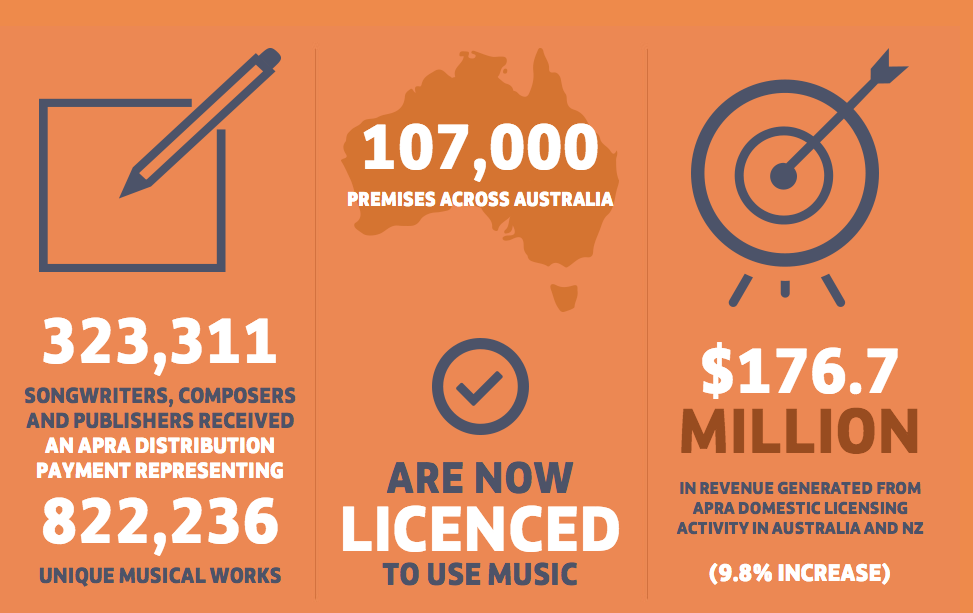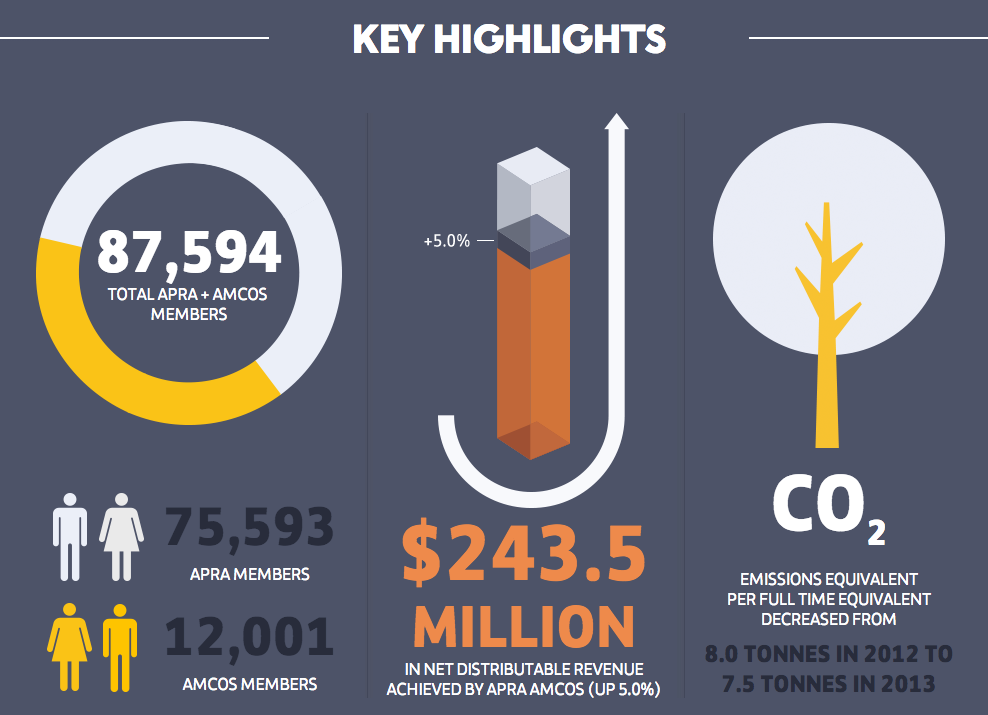With traditional revenue streams from record sales shrinking, licensing and broadcasting of music is becoming an ever-important income source for Australian musicians.
Just ask any of the Aussie artists that benefited in a share of the more than $243 million that was generated through the use of their music in public, on the air, in concerts, on television, and at concerts.
The organisation responsible for collecting licensing royalties on behalf of those songwriters, composers and music publishers is APRA|AMCOS, who have just released the financial results for the 2012/13 financial year.
The APRA agency paid $177.4 million to its members across Australia and New Zealand in the last financial year, while AMCOS – who governs royalty collection from record companies, digital music service providers, and other technical services – delivered around $59.8 million across the board, as The Music reports.
Combined APRA|AMCOS distributed revenue delivered a whopping $243.5 million across the board to 323,311 music-makers and publishers – an average of just under $550 each – earned from 833,236 unique musical works. The $243.5m figure marks an increase of 5% from last year’s financial results of $237 million, which itself saw an impressive growth of 14% from the previous years.
In layman’s terms, the increasing monetary figures show how important licensing is in helping artists to actually profit from their creative output and make end’s meet, something addressed by APRA|AMCOS CEO Brett Cottle in his annual address. “Copyright is alive and well and is as indispensably relevant to music writers and music publishers in Australia and New Zealand as it has ever been.”
“Copyright is alive and well and is as indispensably relevant to music writers and music publishers in Australia and New Zealand as it has ever been,” says Cottle.
Love Music?
Get your daily dose of metal, rock, indie, pop, and everything else in between.
“Without copyright – crafted to an internationally acceptable standard – there can be no royalty payments to writers, artists or their business partners for the various uses made of their works,” he adds. “In other words, without a reasonable copyright law there is no market for music, art or literature – and no reward for those who create it.”
Copyright issues have made some major waves in the music world recently, with record labels continuing to trumpet the rallying call that music piracy is continuing to erode at their profit margins, despite contrary industry reports showing that illegal downloads – in combination with free streaming platforms like Spotify and YouTube – may in fact be helping the industry rather than hindering.
A UK body even went as far as labelling music piracy as a “minor activity” as a result of figures showing that copyright-breaking activity had dropped by a third in Great Britain.
From an artist perspective, it was recently shown that mashup maestro Girl Talk, the ‘Most Wanted’ poster boy of illegal sampling, was actually helping boost sales of the musicians and bands he samples in his high-profile mixtapes, rather than taking from their profits.
Even APRA has done its own research in the area, with a survey from earlier in the year showing that its rich people who are stealing music, with 30% of those surveyed admitting they earned over $100k a year, clearly able to afford what they’re pilfering considering that the price of music is cheaper now than it’s ever been.
Of course it all reflects the consistent shift of music from physical distribution to the digital realm, which has affected ‘mechanical’ royalties half AMCOs more than APRA, showing a 4.4% decline in revenue from last year, however by contrast APRA’s rise of 4.2% in the same financial year just about offsets the difference.
Additionally APRA’s licensing activity in Australia and New Zealand generated $176.7 million in revenue, an increase of 9.8% thanks to growth in new media, general public performance, radio, TV, educational licensing, and most notably, ‘new media’, which accounts for nearly half of AMCOS revenue.
That 50% figure is defined by digital downloads, which totalled $26.7 million – the lion’s share of profits – for the 2012-13 period, while revenue rom subscription and ad-funded services more than doubled in the same period to $1.2 million, largely thanks to the expansion of established services like Spotify, Deezer, and Rdio, as well as the Australian launch of major players like Google.
You can view some key infographics from the 2012-2013 APRA AMCOS Year in Review (including Sustainability Report) below, or view the full report online at at http://sustainability.apra-amcos.com.au/


































